by Wine Owners
Posted on 2019-01-21
Latour ’82, Mouton Rothschild ’82, Mouton Rothschild ’82, ’86, Haut Brion ’89, La Mission Haut Brion ’89, Margaux ’90, Cheval Blanc ’90 and Pichon Baron ‘90
When managing two wine investment funds (2006-2016) we referred to this subsection of the portfolio as ‘the legends‘. They all received cast iron reviews from all the major critics and rock solid and multiple 100s from Big Bob. Cheval Blanc ’90 “unequivocally a brilliant wine” (Neal Martin) has slipped a little to a 98+, but otherwise these wines are confirmed as truly great – legendary in fact! As such, they don’t come cheap (prices in GBP per bottle in graphic below).
Latour and Mouton ’82, +46% and 38% in 2018 respectively, Haut Brion and La Mission ’89 +35% and +52% respectively and Margaux ’90 +35% have all broken out and have massively outperformed the index in the last few months. I believe they can continue to yield positive returns.
Scarcity has been the big driver of price rises in the last couple of years as demonstrated most ably by Burgundy (WO Burgundy Index +33% for 2018, +16% in 2017). This is a prime example of how the principle of good demand versus limited supply in the wine market can work. As a region Burgundy has thrashed others as production is so much smaller, especially with Bordeaux in comparison. Where Bordeaux has been able to compete is in these older vintages of legendary wines, where consumption has driven a scarcity of supply. Each case that is now opened will have a direct impact on that side of the equation.

Cheval ’90 has been volatile but is generally on the up and is well worth considering. I have included Pichon Baron ’90, only a 98+ according to Neal Martin but a Steven Spurrier legend, as it is so relatively cheap and has not broken out at all, so watch this space. The really obvious choice, however, is Mouton ’86. This wine at 32+ years is still a baby in terms of maturity but has an exciting life ahead. Its backwardness has had an impact on the wine’s supply but that will change. As ever good provenance is extremely important and as this is a wine that has been traded more than most so beware - we have seen many examples of poor condition. If this can be found in good nick, do not hesitate in acquiring it - it’s a legend!
Recommendation
Buy: Mouton ’86, Cheval Blanc ’90, Pichon Baron ‘90
Hold: if it’s a legend, continue to hold, for now at least…
N.B. Petrus ’89 and ’90 fall into the ‘legend’ definition but they are so expensive (c.£45,000 per 12) and rare, they have been excluded here.
Miles Davis - professional wine consultant working in the fine wine market. He has been a wine collector for thirty years and managed wine investment funds between 2006-17 for Wine Asset Managers LLP.
by Wine Owners
Posted on 2019-01-18
WO Score: 96
Price: £6,900 per 12
Margaux ’96 has always received rave reviews from the Wine Advocate, whether is was big Bob himself or Neal Martin who awarded it the full 100 in October ’16. Neal does not hand out the perfect score lightly – in fact, barely ever. Our own Nick Martin gave it the full three figures at the Wine Owner’s Margaux dinner last summer although his clout is not quite as heavy!
Left bank 96s deserve a decent allocation in any investment portfolio given their quality, liquidity and age profiles. You could argue the stars here are aligned. Margaux ’90, the only other confirmed 100-point Margaux from vintages still possible to source, enjoyed a chart break out starting last summer (see chart below). The ’96 is trading at a very attractive 47% discount to the ’90 suggesting a strong recommendation. The chart break out may not be around the corner but I’d want to be long when it does.
Recommendation: Buy as a core holding.
by Wine Owners
Posted on 2019-01-15
Chateau Margaux - ©Wine Owners Ltd.
WO Score: 95
Price: £4,675 per 12
Margaux ’89 has never received great scores from Robert Parker, with five tasting notes at either 89 or 90 points. His last post on the subject, however, was recorded in 2003. Neal Martin has always been more generous, rating the wine between 92 and 95, the last note dated 2010 – so, again, some time ago. In 2008 Jancis Robinson rewarded the wine with a generous 19 points which, as we know, is a high score from her.
The relatively low (and now aged) scores from Parker have probably always depressed the price performance of Margaux ’89. A more recent note from another critic a bit closer to home, from a dinner only a few months ago, yielded this review: “The generosity of the vintage is evident on the nose, yet the accomplishments of this wine are still hidden, and there’s a sense of more to come. That grainy texture and gorgeous spiced finish are surely harbingers of great things in store for future drinking. As a result, a decent investment to boot for a 10-year view: 94+.”
Margaux ‘89 has always been dwarfed by its much acclaimed sister from the ’90 vintage which currently trades at £13,000 per 12. 1989 and 1990 are often coupled for comparative purposes and have thrown up some intriguing pairs, both for tasting and trading purposes, Haut Brion and Petrus being the most fabled.
As the chart below demonstrates, the prices of Margaux ’89 and ’90 started diverging six months ago and the differential has never been wider. This, coupled with our own notes above, gives us good reason to recommend a purchase.
___ 1989
___ 1990
Recommendation: Buy.
by Wine Owners
Posted on 2018-06-28
Whilst expensive Burgundies make the headlines, there's another revolution taking place that is transforming the qualitative level of winemaking more generally in Burgundy.
Revolution
It's a revolution that's very different to the one caused by an influx of corporate cash snapping up top domaines that produce some of the region’s most sought-after wines.
Daughters and sons who are graduating from l’école viticole, and who spend their stages at new world wineries or with progressive in-region vignerons, are taking best practises in the vines and chais back to familial domaines and transforming quality of those wines. Other offspring are going it alone, relying on their social network to buy grapes from friends and friends of family. And still others are coming back to their roots, turning their back on a career in Paris for the siren call of the Côte d’Or.
In a way there’s a relationship between the two; the big money coming in is offering the promise of a wealthier future to the next generation.
Must buys
Within this dynamic atmosphere there are lots of value buying opportunities. One doesn’t have to be a millionaire to own and to drink Burgundy. But you need to be quicker to claim an early allocation than previously. Prices of new discoveries rise fast. Whereas in the past it would have taken many vintages of successes before a domaine became established enough to justify rapid price hikes, these days positive press and ensuing price escalation can happen quickly.
How do I discover new producers?
Follow your favourite merchants – they’ll organise events or dinners at which the wines they represent can be tasted, allowing you to figure out which of the wines they are offering you think are the real deal.
Follow the critics – Neal Martin is now at Vinous, William Kelley has assumed the mantle at robertparker.com and Steen Öhman is busy discovering new talent at Winehog.
The blog format of Winehog is well suited to reading about new discoveries, where he’s picked up on Thibaud (Y) Clerget, Nicolas Faure, his fiancée Amelie Berthaut at Berthaut-Gerbet, Maxime Cheurlin at Georges Nöellat, Duroché, Jean-Marc Bouley, Arnaud Tessier, and Jean-Marc Vincent to highlight a range of notable domaines.
Charmes Dessus 2012, Domaine Tessier © Nick Martin
His latest discovery is Marthe Henri Boillot in Mersault, a true ‘start up’ having returned to pick up the remnants of her grandfather’s estate and has cut sourcing deals with friends.
It’s a familiar story. Down the road in Santenay Jean-Marc and Anne-Marie Vincent picked up the reins of his grandfather’s lapsed estate back in the late 1990s, and have transformed it into by far the best domaine of Santenay, making wines of great succulence, nerve and aromatic complexity. In fact, his reputation as one of the best true vignerons on the whole Côte is widely recognised by many other top producers all the way up into the Côte de Nuits.
They say birds of a feather flock together. Just look at Jean-Marc’s vigneron network, and you discover producers who share the same qualitative ethic and who are in search of constant improvements; producers such as Olivier Lamy, Jean-Marc Bouley and the passionately intense, super-fit Bruno Lorenzon in Mercurey.
Jean-Marc Vincent © Nick Martin
High density planting, low plant yields, vine training to minimise stress on the vine’s foot, braiding à la Leroy, soil microbial activity/ fertility, low sulphur addition late on in the winemaking process, rigorous triages of natural corks - are typical leitmotifs of these, and a growing number of young, ambitious producers.
In Vosne-Romanée, the brilliant and young family winemaker at Arnoux-Lachaux, Charles, has employed the braided training technique of his heroine Lalou-Bize Leroy to magical effect in his Aux Reignot vineyard, adding definition, an extraordinary energy and drive to this profound wine that is Grand Cru in everything but name. Arnoux Lachaux’s prices have skyrocketed so in that sense that particular ship has sailed; plenty are yet to leave port.
by Wine Owners
Posted on 2017-03-22
Few producers ever achieve the magical 100 point rating from the Wine Advocate. Parker’s ratings have been the most influential in the world, so to achieve the magic century is quite some accolade; to achieve it more than once is the stuff of dreams; to achieve it 28 times as have Guigal’s famed Cote Rotie triumvirate of La Landonne, La Turque and La Mouline (collectively nicknamed ‘the La Las’) is unprecedented. No other producer from a single appellation comes close.
You might have thought that these three wine with a claim to be among the finest in the world should cost the earth, shouldn’t they? Well, in fact they don’t – at least not in comparison with the finest wines of Bordeaux, Burgundy and California.
For the purposes of this analysis we’re going to look at the 2009 vintage, which paints a fairly typical picture for these wines. Historically there is very little variation in the values of the three wines, with prices often within a 3% range. So, this chart for La Mouline ’09 is mirrored closely by the other two. What is immediately noticeable is that prices have, until midway through last year, fallen consistently. This despite two 100 point scores in November 2013 and September 2014!
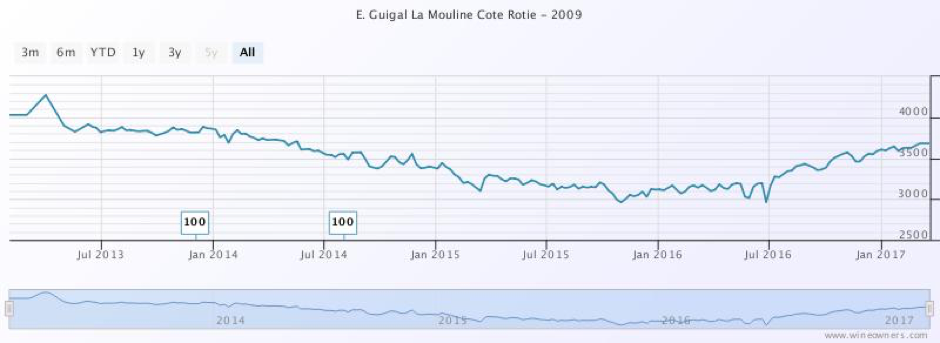
The fall in price is on a par with the falls in value of Bordeaux wines in the same period, but importantly the La Las did not have a huge price rise immediately prior to the falls that insulated many buyers from the slump. It seems, on the face of it that Guigal’s amazing wines were simply the victim of a lack of global interest in Rhone wines at the top end.
This seems to be changing however, as over the last 6 to 9 months the relatively attractive pricing has found favour, and sentiment seems to have turned positive. All good vintages across all three wines are moving upwards, and demand is out-stripping supply for the first time in many years.
La Mouline 09 is 15% up since July, and is on its way back to the £4000 a case level last seen in early 2013. In our view there is reason* to be confident that this recovery is a fundamental re-evaluation of the value of the wine, rather than simply the beneficial effect of weak Sterling, and there is definitely reason* to add this to a cellar, for both investment and drinking purposes.
So, what is this reason you may well ask?
Sadly, the La La’s were among the chosen wines of various boiler room, sales led operations who decided that they were ideal wines to sell as investments to unsuspecting investors at way over fair market prices. This created skewed pricing and led to reputational damage to the wines that caused prices to drop. Thankfully most of these operations have now closed down, and their negative impact on the market has dissipated. The secondary market is now a healthier place for these great wines, and prices are once again reflecting the supreme quality and longevity of Rhone’s finest.
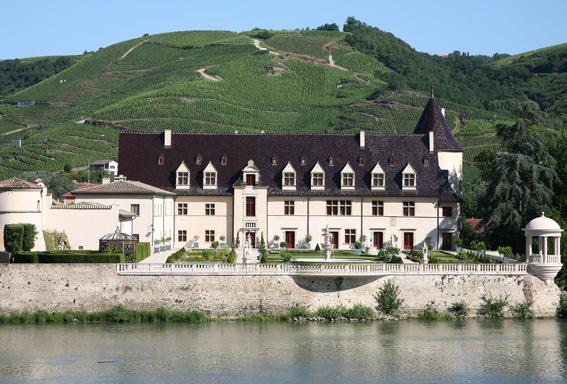
by Wine Owners
Posted on 2016-09-20
There is a central theme within psychology that is concerned with the extent to which behaviour is a product of either inherited (i.e. genetic) or acquired (i.e. learned) characteristics. It seeks to explain how much of a person’s character, personality and behaviour can be attributed purely to evolutionary biology, and how important environmental factors such as education, parenting styles, social status and geographical location are in defining an individual.
There are those who come under the term nativists who believe that genetic characteristics are pre-eminent, and that to a large extent there is genetic ‘pre-wiring’ that is the foundation of all behaviour. On the other hand, there is school of thought labelled behaviourism that suggests humans are a ‘blank slate’ upon which anything can be written.
Anyway, enough of the psychobabble. What has this got to do with wine? The analogy will I am sure be obvious to many of you. All you need do is replace ‘nature’ with ‘terroir’, and ‘nurture’ with ‘winemaker’.
In the 80s and 90s there was a well-documented move towards the winemaker being paramount, particularly prevalent in the New World. This ‘Cult of the Winemaker’ phenomenon, exemplified by such luminaries as Michel Rolland meant that certain styles of wine could be created via specific cellar techniques, which lessened the importance of the raw ingredients and ‘terroir’. This move also coincided with the rise of the superstar wine critics such as Robert Parker whose commentaries not only reflected their tastes and inclinations, but also helped shape the style of wines being made. Even if the effects of ‘Parkerization’ are debatable, the mere fact that the word itself exists suggests an impact of sorts. If nurture, in the guise of the Winemaker and the Critic, were the focus of the final decades of the previous decade, it seems that nature has been making a comeback in this millennium.
Biodynamic techniques, natural wines, and a pointed re-focussing on allowing the land to speak for itself seem to have come back into vogue. Arguably, it is the improvements in cellar technology and techniques introduced by modern Winemakers that have allowed producers to once again champion the primacy of their soil and vines in characterising their wines. Certainly there is a very real sense that individuality is the current keyword for winemakers, and that the best wines being made today have nature rather than nurture as their heartbeat.
The very best wines have always been the expression of their terroir, and it is this link to the land that had made generation after generation fall in love with particular wines. The fact that a vineyard a few hundred yards up the slope from another, or just along the road from another, can produce a wine that is distinct and unique from its neighbour is one of the most fascinating aspects of wine making, and the root of much that intrigues us. Increasingly it is the role of the winemaker to allow this land to express itself eloquently with minimal intervention. The true mark of a great winemaker is now seen as how they can allow the terroir to shine through, rather than how distinctive their ‘signature’ wine making style is.
In recent years there has been a growing consensus within the world of academic psychology that we are now in a post Nature v Nurture world – that no further intellectual currency can be gained by debating a polarised topic when the answer is clearly an amalgam of the two. The interaction and ‘feedback loops’ between the two positions mean that it is a fool’s errand to work out which is more important when it comes to explaining behaviour, and in the world of wine I suspect the same story will play out.
Great wines need both great raw products and great winemakers to help them realise their full potential. To suggest that great wines can be made from average grapes is clearly illogical. Equally, it is unreasonable to think that average winemakers can turn an incredible crop into incredible wines.
History suggests that there are certain plots of land where alchemy can happen. It also shows that there are certain people who can, through talent, hard work and a drop of genius make the products of this land into elixirs. You cannot speak of Montrachet, Hermitage and Cote Rotie without mention of Leflaive, Chave and Guigal.
We do feel in our bones that as wine is the product of an agricultural process, one should accept that what goes on in the field is the number one priority for any producer. But you’d better have a great cellar and great people in it if you want to make magic…
by Wine Owners
Posted on 2016-08-19
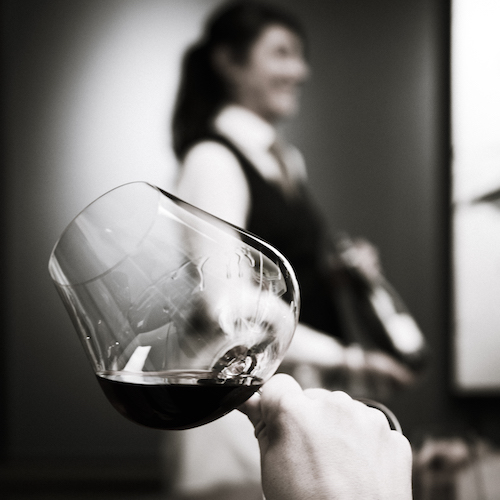
It has been said by some wise sage that 1% of people care way too much about wine and 99% of people don’t care enough. This rings true, and I thought it would be interesting to investigate why this is.
Most of my friends and peers drink wine. With sufficient regularity to alarm the British Medical Council in many cases. And most of them drink rubbish. Seriously – any £5 bottle will do the trick normally, and the second cheapest wine on the restaurant wine list is pretty much as far as they go.
This baffles me.
OK, so not everyone is going to spend a fortune on a wine collection, or consult Parker or Robinson for every wine buying decision, but it is really simple to drink more interesting wines without breaking the bank or having to do hours of painstaking research.Here are a few rules of thumb, aimed at buying wine in a restaurant (assuming it isn’t one of the growing numbers that allow you to BYO for a modest corkage).
1) The cheapest wines normally have the highest % mark-ups, and the second cheapest wine normally has the highest mark-up. Restaurateurs know how people make buying decisions, so be aware of the relative lack of value.
2) The first few wines on a list will have tendency to be ‘neutral’ in style, as they are likely to be bought to match all foods. One size fits all is not the best way to approach buying wine – think about what you are going to order.
3) Don’t be afraid to buy by the glass. Technology such as Coravin means a far wider array of wines can be sampled, so you can avoid just plumping for a bottle of NZ Sauvignon Blanc, or a bog standard Rioja, and narrowing your options. Why not order a suitable wine for every course of you meal?
4) Look for exotic grape varieties or little known regions – these are likely to be the sommelier’s attempts to stamp their expertise and personality on the wine list, and will likely be good value and interesting. Think Greece, Portugal, Austria, or regions like Swartland in South Africa or Salta in Argentina.
5) Embrace the joys of dessert wines. Seriously, sweet wines are amazing things that are criminally overlooked. A little bit of ‘sticky’ at the end of your meal is always a good thing!
6) If the restaurant has a sommelier, get their opinion. Don’t be afraid to ask seemingly silly questions. These guys are there to ensure you get the most enjoyment from your meal.
by Wine Owners
Posted on 2016-03-24
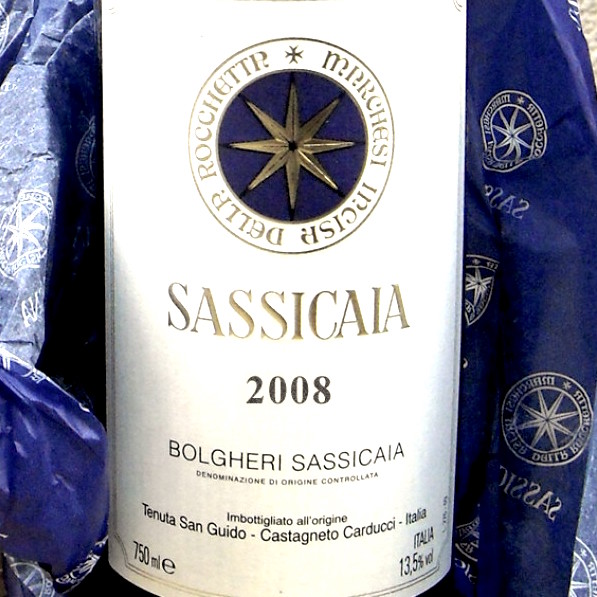 OWNER
OWNER
Tenuta San Guido
APPELLATION
Bolgheri
BLEND
85% Cabernet Sauvignon, 15% Cabernet Franc
AVERAGE SCORE
94/100
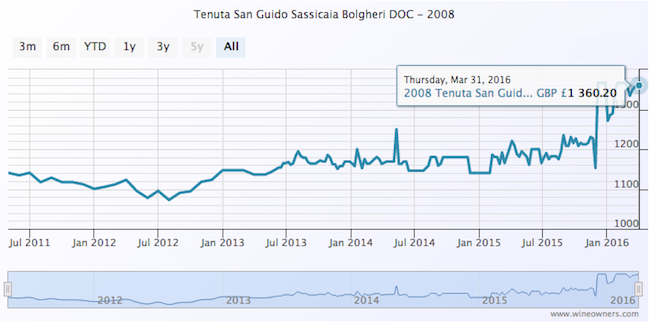
REVIEW
The 2008 Sassicaia is a rich, deep wine imbued with notable class in its black cherries, plums, grilled herbs, minerals and smoke. The 2008 is a decidedly buttoned-up, firm Sassicaia that is currently holding back much of its potential, unlike the 2006 and 2007, both of which were far more obvious wines. Readers who can afford to wait will be treated to a sublime wine once this settles down in bottle. Muscular, firm tannins frame the exquisite finish in this dark, implosive Sassicaia. The 2008 Sassicaia is 85% Cabernet Sauvignon and 15% Cabernet Franc. The wine spent 24 months in French oak barrels. Anticipated maturity: 2018-2038. Tenuta San Guido is on a roll these days. Over the last few years, the estate has released a number of hugely delicious wines. These new releases are nicely aligned with their respective vintages. The entry-level Le Difese and Guidalberto both capture the essence of a sunny year that made wines well suited to near-term drinking, while the 2008 Sassicaia captures the potential of a powerful vintage characterized by low yields and a late harvest. (Robert Parker, 2011).
by Wine Owners
Posted on 2016-03-22
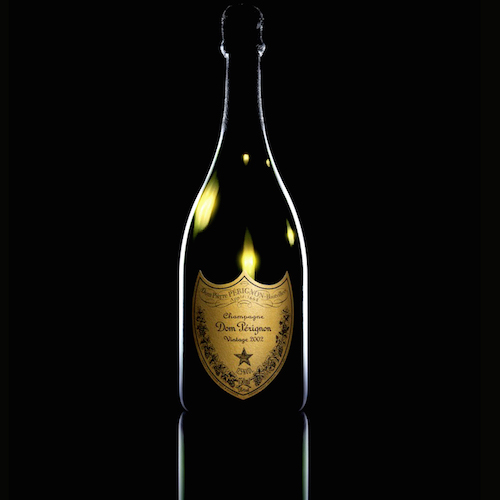 OWNER
OWNER
Dom Perignon Champagne
APPELLATION
France
BLEND
Chardonnay, Pinot Noir
AVERAGE SCORE
95/100

REVIEW:
The 2002 Dom Perignon is at first intensely floral, with perfumed jasmine that dominates the bouquet. With time in the glass the wine gains richness as the flavors turn decidedly riper and almost tropical. Apricots, passion fruit and peaches emerge from this flashy, opulent Dom Perignon.
(Robert Parker, 2010)

by Wine Owners
Posted on 2016-03-16
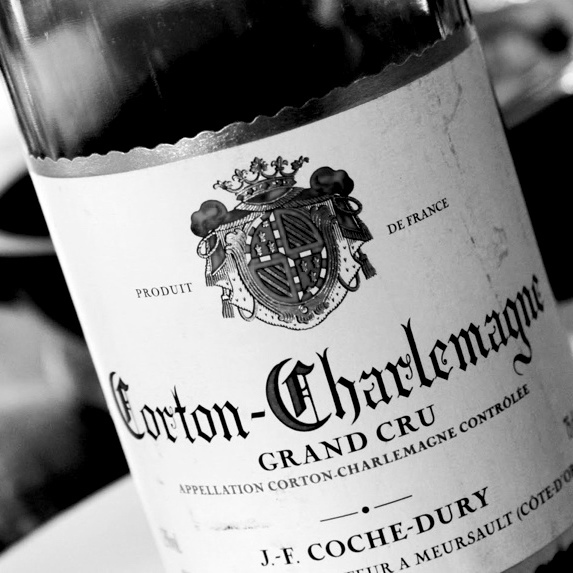 OWNER
OWNER
Domaine Jean-Francois Coche-Dury
APPELLATION
Corton-Charlemagne
BLEND
Chardonnay
AVERAGE SCORE
95/100
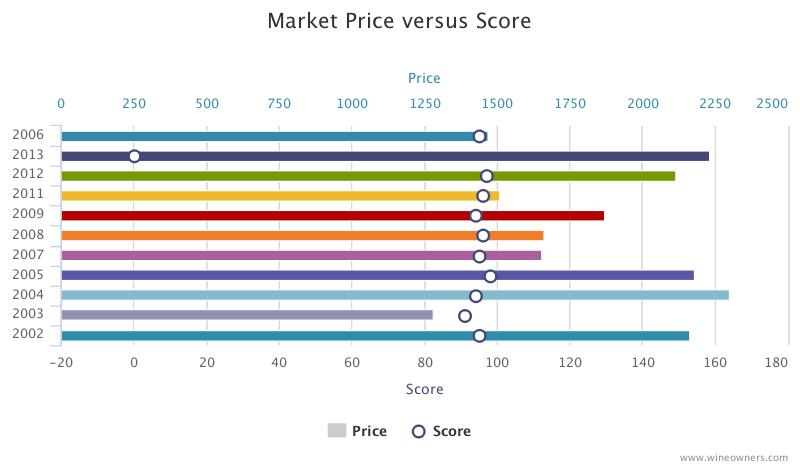
REVIEW
Black tea, pugent herbs, iris, narcissus, and an alkaline, saline note suggestive of ocean breezes greet the nose. On the palate, this grips with penetrating pungency and tactile stoniness, leaving behind a memorable concentrate of chalk, salts, faintly bitter herbal essences, along with marrow and animal bone reduction. Surely it will go on to further glory in the bottle and should reward 15 or more years' cellaring. (Robert Parker, 2008)
SEE FULL PROFILE

